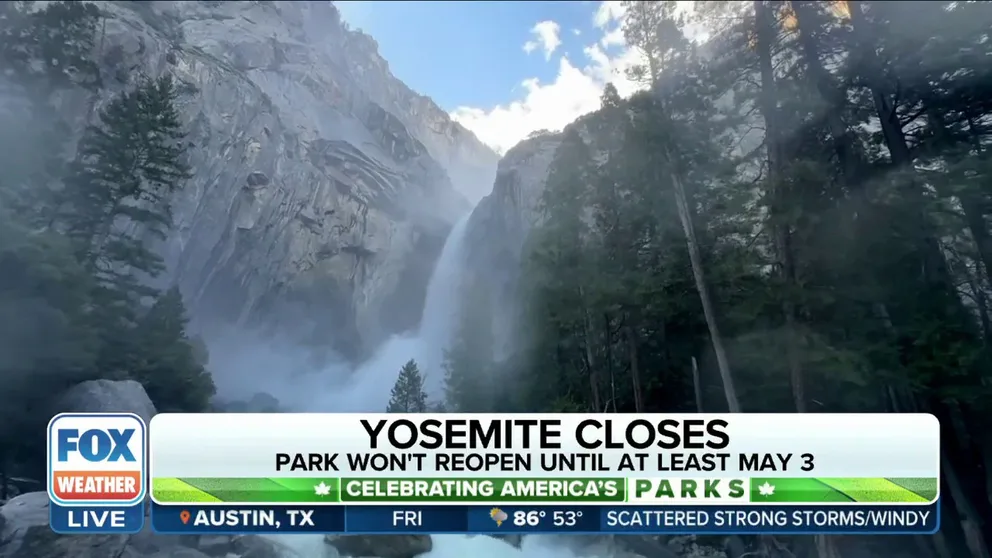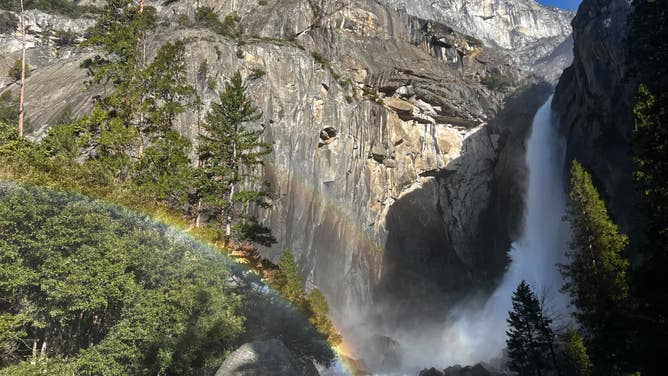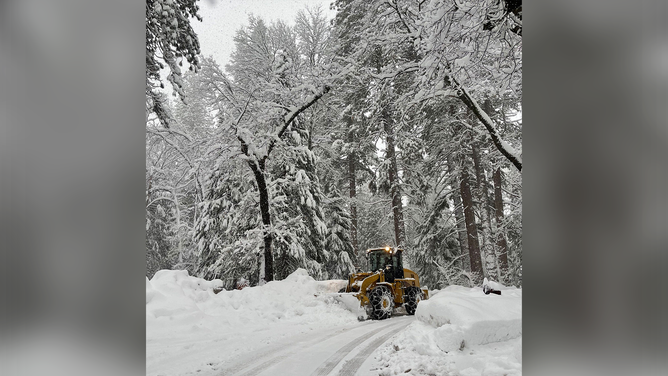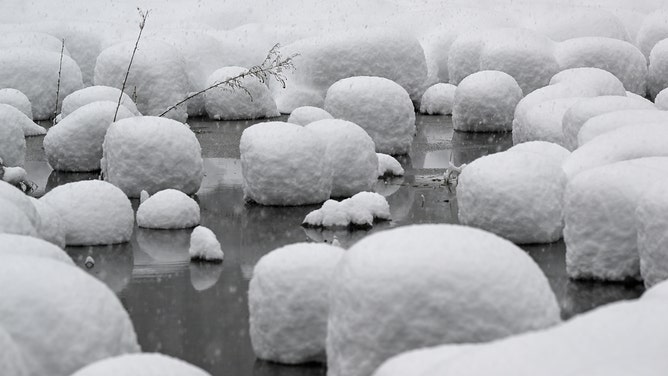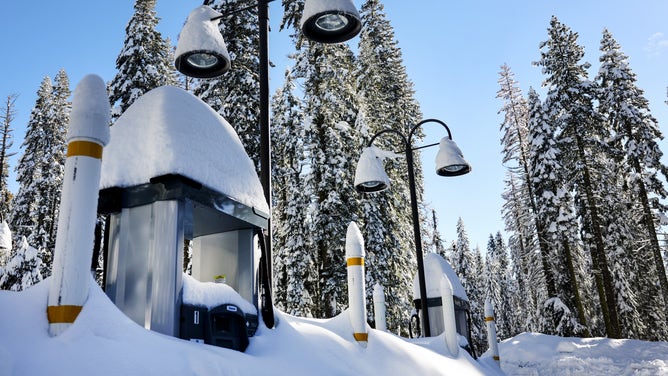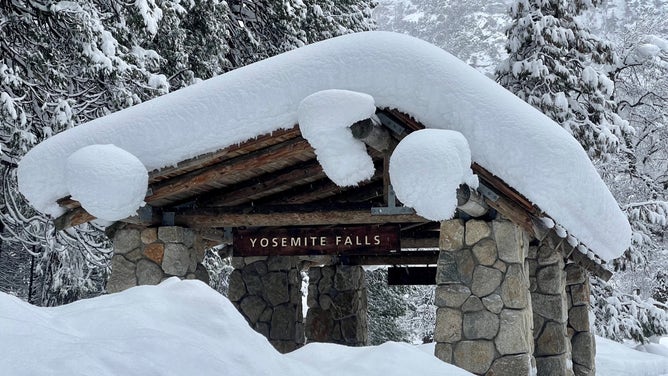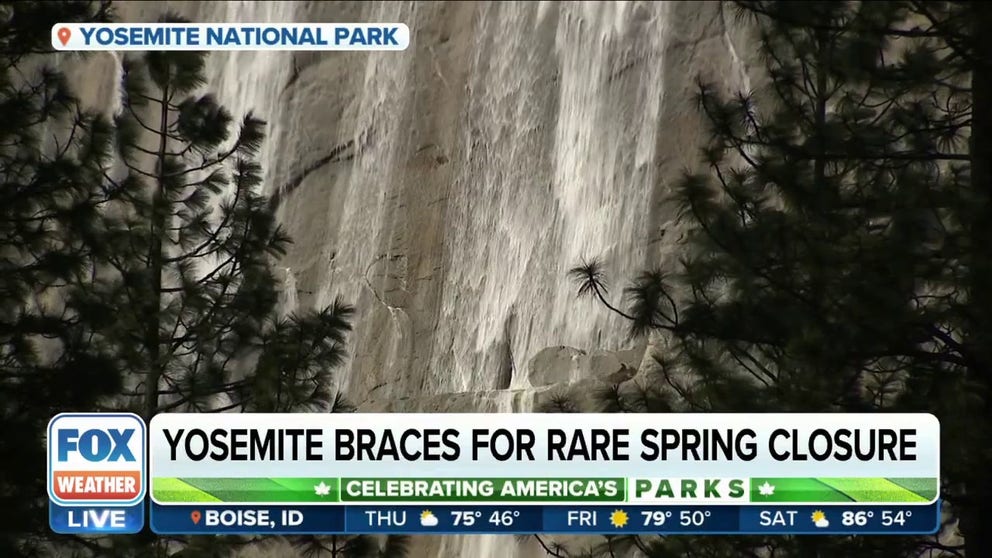Yosemite's epic snowmelt could spell trouble for national park bracing for spring closure
In February, vast amounts of snow closed roads into the park and made some facilities inaccessible. Now, the meltwater from that same snow is pouring into Yosemite Valley, forcing the park service to close most of the park by Friday night.
Huge snowpack could lead to flooding through summer at Yosemite National Park
Yosemite National Park will close for days due to flooding from snowmelt. The park won’t reopen till at least May 3. Temperatures are expected to increase by 5 to 15 degrees this weekend, triggering water levels to rise in the Merced River. FOX Weather's Robert Ray reports.
YOSEMITE NATIONAL PARK, Calif. – A record snowpack is now shutting down Yosemite National Park twice in the same year.
In February, vast amounts of snow closed roads into the park and made some facilities inaccessible. Now, the meltwater from that same snow is pouring into Yosemite Valley, forcing the park service to close most of the park by Friday night.
The sound of flowing water is an extraordinary time for Yosemite National Park.
"It’s been an unusual year," park ranger Scott Gediman said.
RIDICULOUS PHOTOS SHOW AFTERMATH OF 12 FEET OF SNOW IN CALIFORNIA'S SIERRA NEVADA
Some areas surrounding Yosemite got nearly two and a half times the average amount of snow this winter in one of the largest snowpacks on record for the national park.
Temperatures will likely reach their highest levels of the season this week as a ridge of high pressure strengthens along the West Coast. In Sacramento, California, highs are expected in the lower 90s through Saturday. Yosemite Falls is expected to reach around 70 degrees Friday and Saturday. As warmer weather returns, water from the melting snow is now everywhere, triggering water levels to rise in the Merced River.
"We’re seeing waterfalls that I’ve never seen before," Gediman said.
Snowmelt thunders down Yosemite cliffs
Flood Watches are in effect and lasting into at least the start of May for much of the Sierra Nevada as temperatures zoom about 10 to 20 degrees above average. The areas of Reno, Tahoe, Yosemite Valley, Yosemite National Park outside the valley and Mammoth Lakes – all areas with plenty of winter snowfall – are included in the watch.
According to the National Park Service, the snowpack in the watershed around Yosemite Valley is releasing 239 billion gallons of water.
In the lower Yosemite Falls, visitors can really feel the power of all the water as the snowmelt thunders down the cliffs. The spray whips them in the face, and they feel as if they are standing in the midst of a rainstorm.
"It’s one of those once-in-a-lifetime experiences that you get to see very rarely," Yosemite visitor Elisey Shaltanov said. "You know, it’s beautiful."
While beautiful, this year’s epic snowmelt and the high water on the Merced River could spell trouble for the park.
THE TOP 10 MOST VISITED US NATIONAL PARKS AND MEMORIALS
Yosemite braces for rare spring closure amid flooding concerns from rapid snowmelt
Amid National Parks Week, the celebrated beauty of Yosemite also creates a very dangerous mix. The snowmelt will make the waterfalls and waterways too dangerous to be near, so Yosemite will close starting at 10am on Friday. The park won’t reopen till at least May 3. FOX Weather's Max Gorden reports.
"Depending on how high the water gets, we’ll start to have water infiltrate buildings. We’ll have it in campgrounds," Gediman said.
National park officials say most of Yosemite Valley will likely stay closed through Wednesday.
"It depends on how much water is coming, how quickly it comes in and how long it stays," Gediman said. "We will always err on the side of safety for the park employees and the park visitors."
As the epic surge of water slowly sculpts rock and carves new streams in this wild gem of a park set high in the Sierra Nevada mountain range, it breathes life into the valley as time flows on. Because in Yosemite, the only constant is change.
